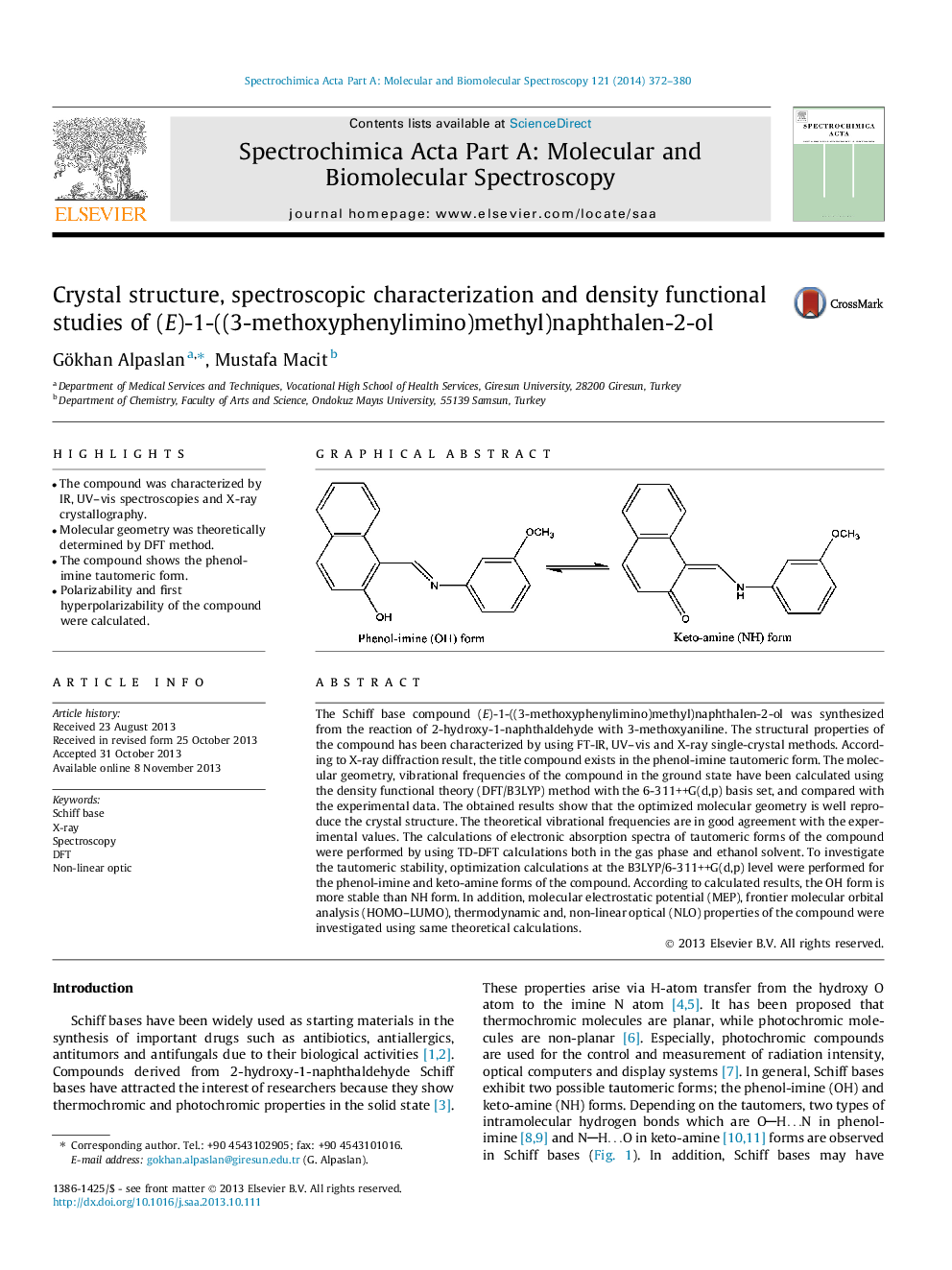| Article ID | Journal | Published Year | Pages | File Type |
|---|---|---|---|---|
| 1230487 | Spectrochimica Acta Part A: Molecular and Biomolecular Spectroscopy | 2014 | 9 Pages |
•The compound was characterized by IR, UV–vis spectroscopies and X-ray crystallography.•Molecular geometry was theoretically determined by DFT method.•The compound shows the phenol-imine tautomeric form.•Polarizability and first hyperpolarizability of the compound were calculated.
The Schiff base compound (E)-1-((3-methoxyphenylimino)methyl)naphthalen-2-ol was synthesized from the reaction of 2-hydroxy-1-naphthaldehyde with 3-methoxyaniline. The structural properties of the compound has been characterized by using FT-IR, UV–vis and X-ray single-crystal methods. According to X-ray diffraction result, the title compound exists in the phenol-imine tautomeric form. The molecular geometry, vibrational frequencies of the compound in the ground state have been calculated using the density functional theory (DFT/B3LYP) method with the 6-311++G(d,p) basis set, and compared with the experimental data. The obtained results show that the optimized molecular geometry is well reproduce the crystal structure. The theoretical vibrational frequencies are in good agreement with the experimental values. The calculations of electronic absorption spectra of tautomeric forms of the compound were performed by using TD-DFT calculations both in the gas phase and ethanol solvent. To investigate the tautomeric stability, optimization calculations at the B3LYP/6-311++G(d,p) level were performed for the phenol-imine and keto-amine forms of the compound. According to calculated results, the OH form is more stable than NH form. In addition, molecular electrostatic potential (MEP), frontier molecular orbital analysis (HOMO–LUMO), thermodynamic and, non-linear optical (NLO) properties of the compound were investigated using same theoretical calculations.
Graphical abstractFigure optionsDownload full-size imageDownload as PowerPoint slide
